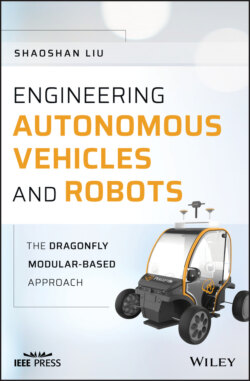Читать книгу Engineering Autonomous Vehicles and Robots - Shaoshan Liu - Страница 12
1.2.2 HD Map Creation and Maintenance
ОглавлениеTraditional digital maps are usually generated from satellite imagery and have meter-level accuracy. Although this accuracy is sufficient for human drivers, autonomous vehicles demand maps with higher accuracy for lane-level information. Therefore, HD maps are needed for autonomous driving.
Just as with traditional digital maps, HD maps have many layers of information. At the bottom layer, instead of using satellite imagery, a grid map is generated by raw LiDAR data, with a grid granularity of about 5 cm by 5 cm. This grid basically records elevation and reflection information of the environment in each cell. As the autonomous vehicles are moving and collecting new LiDAR scans, they perform self-localization by performing a real time comparison of the new LiDAR scans against the grid map with initial position estimates provided by GNSS [8].
On top of the grid layer, there are several layers of semantic information. For instance, lane information is added to the grid map to allow autonomous vehicles to determine whether they are on the correct lane when moving. On top of the lane information, traffic sign labels are added to notify the autonomous vehicles of the local speed limit, whether traffic lights are nearby, etc. This gives an additional layer of protection in case the sensors on the autonomous vehicles fail to catch the signs.
Traditional digital maps have a refresh cycle of 6–12 months. However, to make sure the HD maps contain the most up-to-date information, the refresh cycle for HD maps should be shortened to no more than one week. As a result, operating, generating, and maintaining HD maps can cost upwards of millions of dollars per year for a mid-size city.
